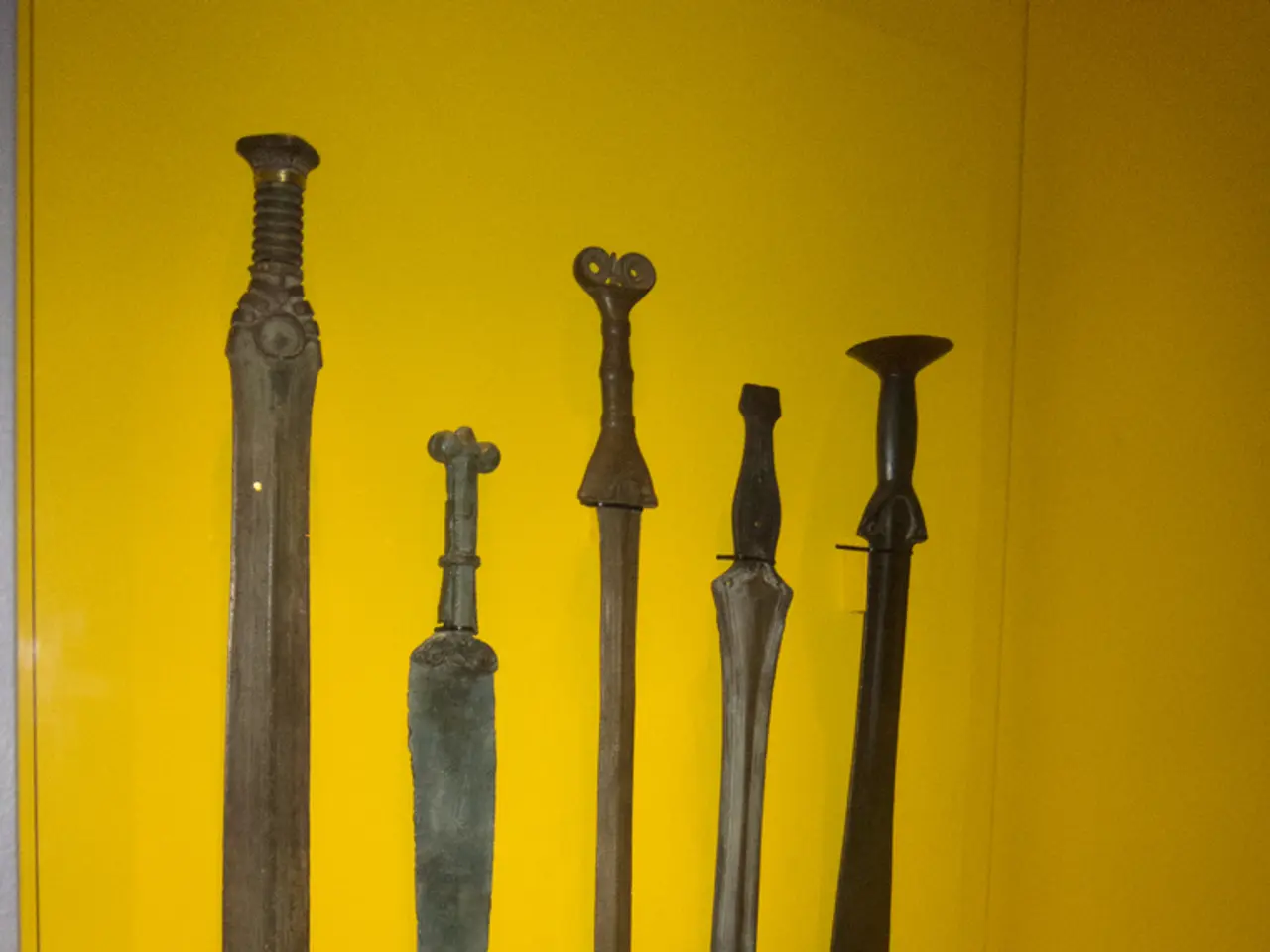Unusual and Creative Armaments from the Medieval Era
The medieval and early Renaissance periods were marked by a spirit of experimentation, as warfare evolved and adapted to the challenges of the time. This era saw the development and use of a variety of unique and extraordinary weapons, some of which are still captivating our imagination today.
One such weapon was the Rifle Shield, a hybrid weapon combining a small firearm with a metal shield, which originated in the 16th century. The Blunderbuss, a short-barreled firearm with a flared muzzle, was also popular during this period, providing an effective close-quarters defense solution.
Greek Fire, a symbol of Byzantine ingenuity, was another remarkable weapon. First recorded during the 7th century C.E., it was a powerful incendiary weapon that could burn on water, making it a formidable naval weapon. Deployed via specialized siphons on Byzantine ships, it could be projected as a liquid flame onto enemy vessels, causing chaos and demoralization among enemy forces. Greek Fire was also used in handheld clay grenades and portable tubes during land battles.
The exact composition of Greek Fire remains a mystery, though it is believed to have contained a combination of petroleum, quicklime, sulfur, and resin. Its visual horror, an unquenchable fire sweeping across the sea, sowed chaos and fear among enemy fleets.
The Odachi, a large Japanese sword, was another intriguing weapon used by warriors in feudal Japan, particularly against enemy cavalry units. However, due to its size and difficulty in wielding, it eventually fell out of use, transitioning to a ceremonial role.
The Man Catcher, a pole arm with a spring-loaded or solid semicircular head, was used for capturing opponents during the medieval and early Renaissance periods. The Cat-o'-Nine-Tails, a multi-tailed whipping device, was also historically used for corporal punishment, particularly within naval and military contexts.
Coal Balls or Briquettes, made by covering coal with a combustible material, were used as a form of incendiary weapon during the late medieval period, especially in England. They were used to start fires or damage enemy fortifications.
Scorpion Bombs, while not specifically medieval, illustrate the ingenuity and brutality of ancient warfare that continued into the medieval period. These bombs were used by the Hatran defenders against Roman legionnaires. Flaming Pigs, another ancient tactic, were set on fire and released towards enemy lines, causing panic and disruption.
These weapons reflect the experimental nature of warfare during the medieval and early Renaissance periods in several ways. The use of new materials like coal or incendiary substances showcased the willingness to experiment with available resources. Weapons like caltrops were developed to counter emerging technologies, such as heavier armor. The employment of fear-inducing tactics, like flaming animals, highlights the intentional use of terror to disrupt enemy lines.
The ribauldequin, an early form of multiple-barrel artillery, was another example of innovation during this period. Despite the mystery surrounding the formula of Greek Fire, its impact on warfare cannot be understated. These weapons, with their unique designs and functions, offer a fascinating glimpse into the experimental spirit of warfare during the medieval and early Renaissance periods.
A discussion of the experimental spirit in warfare during the medieval and early Renaissance periods is not limited to weapons, as it also extended to other areas. For instance, photography and video could be used to record and study battles, providing insights that could shape military strategies.
Additionally, the spotlight of sports history during this era often focuses on the creative and daring athletes who pushed boundaries related to equipment, technique, and strategy, similar to the innovative warriors of that period.








